Encounter at Raven’s Gate/Red Hill
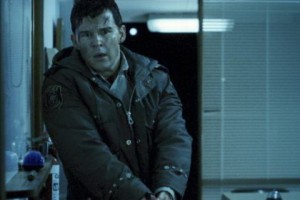 When a movie is described as having “atmosphere for days,” it seems like the kind of backhanded compliment that would be the equivalent of describing a paraplegic as having “wheels for days.” Sure, technically it’s true, but it’s a purposeful way of ignoring the issue at hand. You mention the atmosphere because the rest of the film is limited; you mention the capable wheelchair, because the body sitting in it is not.
When a movie is described as having “atmosphere for days,” it seems like the kind of backhanded compliment that would be the equivalent of describing a paraplegic as having “wheels for days.” Sure, technically it’s true, but it’s a purposeful way of ignoring the issue at hand. You mention the atmosphere because the rest of the film is limited; you mention the capable wheelchair, because the body sitting in it is not.
Last year’s Australian western/thriller, Patrick Hughes’ Red Hill has all the elements of what should be a solid genre movie, a new cop, running from his past, gets transferred to a small town and all the locals are hush-hush about some secret. The town’s shame eventually comes to find them in an onslaught of would-be stylish violence, in the form of a revenge-seeking Aboriginal who just escaped prison. Already owing plenty in style and content to No Country For Old Men, Red Hill tries to introduce a supernatural element, but never resolves it or explains the relevance of why the cattle are mysteriously dying. Red Hill has plenty of moody lighting, action poses before the storm, and a mocking of big city naiveté that has an arc resulting in lousy taglines suitable for a mid-80s Schwarzenegger film. The atmosphere is frankly meaningless, because it’s not in support of anything, and the supernatural stuff is so gratuitous, that when the movie was over I sincerely asked the theater staff if a reel had been left out where we get an explanation. Unfortunately, the DVD offers no help, as there’s no commentary or selection of deleted scenes.
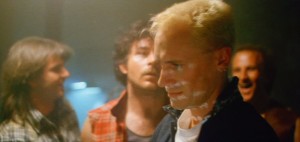 That said, the atmospheric Australian western has begun to make a dent in the past decade, including such memorable films as John Hillcoat’s The Proposition and Rolf de Heer’s The Tracker. Hillcoat went on to direct The Road, which was based on a novel by Cormac McCarthy, who also wrote No Country For Old Men. [Coincidence? Probably.] But before The Tracker (which like Red Hill, also deals with the historical Australian racism towards Aboriginals) de Heer had already ventured into the spare, eerie western, with his sci-fi mish-mash Encounter at Raven’s Gate (also known as Incident at Raven’s Gate).
That said, the atmospheric Australian western has begun to make a dent in the past decade, including such memorable films as John Hillcoat’s The Proposition and Rolf de Heer’s The Tracker. Hillcoat went on to direct The Road, which was based on a novel by Cormac McCarthy, who also wrote No Country For Old Men. [Coincidence? Probably.] But before The Tracker (which like Red Hill, also deals with the historical Australian racism towards Aboriginals) de Heer had already ventured into the spare, eerie western, with his sci-fi mish-mash Encounter at Raven’s Gate (also known as Incident at Raven’s Gate).
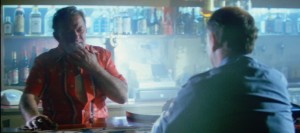 Utilizing the dense daylight golds and evening blues of the barren small farming towns in the Outback, Encounter at Raven’s Gate begins by teasing us with its dialogue (a woman [Celine O’Leary] mocks her husband’s randy brother [Steven Vidler] by saying, “I’ve got better things to do than rev your engine”) before the visual and story teases kick in. De Heer introduces each character with similar contradictions; a cop obsessed with opera is first seen urinating on the side of the road, but he thinks that the punk-rocked petty criminal Vidler is the one without class. Much like other de Heer films, specifically Bad Boy Bubby, Dance Me to My Song, and Alexandra’s Project, Raven’s Gate is about such frustration with being on the wrong end of class warfare, and the inability of its main characters to escape displacement.
Utilizing the dense daylight golds and evening blues of the barren small farming towns in the Outback, Encounter at Raven’s Gate begins by teasing us with its dialogue (a woman [Celine O’Leary] mocks her husband’s randy brother [Steven Vidler] by saying, “I’ve got better things to do than rev your engine”) before the visual and story teases kick in. De Heer introduces each character with similar contradictions; a cop obsessed with opera is first seen urinating on the side of the road, but he thinks that the punk-rocked petty criminal Vidler is the one without class. Much like other de Heer films, specifically Bad Boy Bubby, Dance Me to My Song, and Alexandra’s Project, Raven’s Gate is about such frustration with being on the wrong end of class warfare, and the inability of its main characters to escape displacement.
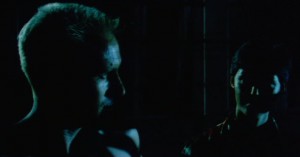 Not all of his ideas are that subtle, however, and his environmental concerns that took over his sci-fi film Epsilon (known in the US as Alien Visitor, Raven’s Gate also has a pale girl with short dark hair as its female lead) rear their head here too. Raven’s Gate is about waste, how we take both our water and plants for granted as well as our personal relationships. De Heer, as a result, manages to sneak in some rather audacious visual tricks that often highlight his obsessions with the evils of industrialization (such as the stunning opening crane shot that slaves over an enormous satellite dish in the middle of this nowhere town).
Not all of his ideas are that subtle, however, and his environmental concerns that took over his sci-fi film Epsilon (known in the US as Alien Visitor, Raven’s Gate also has a pale girl with short dark hair as its female lead) rear their head here too. Raven’s Gate is about waste, how we take both our water and plants for granted as well as our personal relationships. De Heer, as a result, manages to sneak in some rather audacious visual tricks that often highlight his obsessions with the evils of industrialization (such as the stunning opening crane shot that slaves over an enormous satellite dish in the middle of this nowhere town).
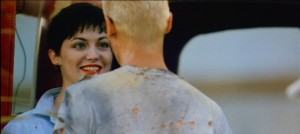 Some of the effects don’t work so well, such as when an alien presence starts to affect the sanity and sheep of Raven’s Gate, characters that enter a specific house have their voices suddenly change as if they had sucked down an entire canister of helium. The way the story is laid out in Raven’s Gate, the mystery of what’s really going on is the most important thing to have us take seriously, and these unintentional comic moments poke holes in the tension. As always, whenever de Heer tries out technically innovative but not show-offy effects to make his point, it’s considerably more effective (like with the use of different cinematographers for each location in Bad Boy Bubby, or the unique sound design).
Some of the effects don’t work so well, such as when an alien presence starts to affect the sanity and sheep of Raven’s Gate, characters that enter a specific house have their voices suddenly change as if they had sucked down an entire canister of helium. The way the story is laid out in Raven’s Gate, the mystery of what’s really going on is the most important thing to have us take seriously, and these unintentional comic moments poke holes in the tension. As always, whenever de Heer tries out technically innovative but not show-offy effects to make his point, it’s considerably more effective (like with the use of different cinematographers for each location in Bad Boy Bubby, or the unique sound design).
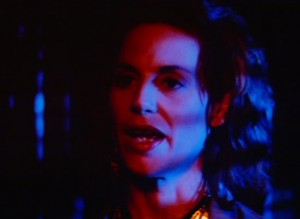 When de Heer doesn’t nudge at us, giving us the opportunity to discover for ourselves whether or not we’re in an alien invasion movie or an end of the world film (or both, like George Romero’s The Crazies), he manages to smooth over some of his budgetary limitations that probably were responsible for the relative incoherence of the unsatisfactory conclusion. It accounts for when we see the lights and the confusion of what might be an alien takeover, it doesn’t matter that we can’t really tell what’s going on, because this would be the way that the characters would experience it. De Heer has always excelled at presenting bizarre and otherworldly situations in the most realistic manner possible. It’s comforting in a way, and gives de Heer a way in and out of situations without the possibility that a confused viewer might feel the need to ask the projectionist if the reels are out of order.
When de Heer doesn’t nudge at us, giving us the opportunity to discover for ourselves whether or not we’re in an alien invasion movie or an end of the world film (or both, like George Romero’s The Crazies), he manages to smooth over some of his budgetary limitations that probably were responsible for the relative incoherence of the unsatisfactory conclusion. It accounts for when we see the lights and the confusion of what might be an alien takeover, it doesn’t matter that we can’t really tell what’s going on, because this would be the way that the characters would experience it. De Heer has always excelled at presenting bizarre and otherworldly situations in the most realistic manner possible. It’s comforting in a way, and gives de Heer a way in and out of situations without the possibility that a confused viewer might feel the need to ask the projectionist if the reels are out of order.



